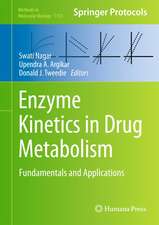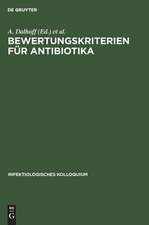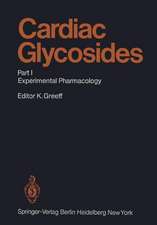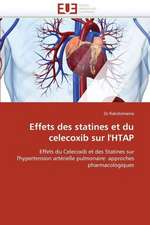Quinolone Antibacterials: Handbook of Experimental Pharmacology, cartea 127
Editat de Jochen Kuhlmann, A. Dalhoff, H. -J. Zeileren Limba Engleză Paperback – 12 feb 2012
Din seria Handbook of Experimental Pharmacology
- 5%
 Preț: 1425.04 lei
Preț: 1425.04 lei - 5%
 Preț: 907.42 lei
Preț: 907.42 lei - 5%
 Preț: 3517.78 lei
Preț: 3517.78 lei - 5%
 Preț: 730.30 lei
Preț: 730.30 lei - 5%
 Preț: 1425.97 lei
Preț: 1425.97 lei - 5%
 Preț: 1435.28 lei
Preț: 1435.28 lei - 5%
 Preț: 1430.52 lei
Preț: 1430.52 lei - 5%
 Preț: 1930.69 lei
Preț: 1930.69 lei - 5%
 Preț: 1922.47 lei
Preț: 1922.47 lei - 5%
 Preț: 1937.46 lei
Preț: 1937.46 lei - 5%
 Preț: 2117.58 lei
Preț: 2117.58 lei - 5%
 Preț: 2119.96 lei
Preț: 2119.96 lei - 5%
 Preț: 2117.38 lei
Preț: 2117.38 lei - 5%
 Preț: 1088.15 lei
Preț: 1088.15 lei - 5%
 Preț: 1098.27 lei
Preț: 1098.27 lei - 5%
 Preț: 1420.29 lei
Preț: 1420.29 lei - 5%
 Preț: 1104.84 lei
Preț: 1104.84 lei - 5%
 Preț: 1104.84 lei
Preț: 1104.84 lei - 5%
 Preț: 1108.14 lei
Preț: 1108.14 lei - 5%
 Preț: 1106.69 lei
Preț: 1106.69 lei - 5%
 Preț: 1105.77 lei
Preț: 1105.77 lei - 5%
 Preț: 1174.35 lei
Preț: 1174.35 lei - 5%
 Preț: 408.48 lei
Preț: 408.48 lei - 5%
 Preț: 409.63 lei
Preț: 409.63 lei - 5%
 Preț: 539.89 lei
Preț: 539.89 lei - 5%
 Preț: 720.47 lei
Preț: 720.47 lei - 5%
 Preț: 733.09 lei
Preț: 733.09 lei - 5%
 Preț: 731.27 lei
Preț: 731.27 lei - 5%
 Preț: 746.43 lei
Preț: 746.43 lei - 5%
 Preț: 747.72 lei
Preț: 747.72 lei - 5%
 Preț: 725.24 lei
Preț: 725.24 lei - 5%
 Preț: 742.80 lei
Preț: 742.80 lei - 5%
 Preț: 393.23 lei
Preț: 393.23 lei - 5%
 Preț: 735.66 lei
Preț: 735.66 lei - 5%
 Preț: 728.33 lei
Preț: 728.33 lei - 5%
 Preț: 389.52 lei
Preț: 389.52 lei - 5%
 Preț: 730.71 lei
Preț: 730.71 lei - 5%
 Preț: 740.58 lei
Preț: 740.58 lei - 5%
 Preț: 730.19 lei
Preț: 730.19 lei - 5%
 Preț: 723.42 lei
Preț: 723.42 lei - 5%
 Preț: 731.27 lei
Preț: 731.27 lei - 5%
 Preț: 726.68 lei
Preț: 726.68 lei - 5%
 Preț: 3516.49 lei
Preț: 3516.49 lei - 5%
 Preț: 729.26 lei
Preț: 729.26 lei - 5%
 Preț: 737.11 lei
Preț: 737.11 lei - 5%
 Preț: 730.92 lei
Preț: 730.92 lei - 5%
 Preț: 738.78 lei
Preț: 738.78 lei - 5%
 Preț: 909.94 lei
Preț: 909.94 lei - 5%
 Preț: 720.10 lei
Preț: 720.10 lei
Preț: 727.44 lei
Preț vechi: 765.72 lei
-5% Nou
Puncte Express: 1091
Preț estimativ în valută:
139.22€ • 144.96$ • 117.66£
139.22€ • 144.96$ • 117.66£
Carte tipărită la comandă
Livrare economică 08-22 martie
Preluare comenzi: 021 569.72.76
Specificații
ISBN-13: 9783642803666
ISBN-10: 3642803660
Pagini: 512
Ilustrații: XVIII, 491 p.
Dimensiuni: 155 x 235 x 27 mm
Greutate: 0.71 kg
Ediția:Softcover reprint of the original 1st ed. 1998
Editura: Springer Berlin, Heidelberg
Colecția Springer
Seria Handbook of Experimental Pharmacology
Locul publicării:Berlin, Heidelberg, Germany
ISBN-10: 3642803660
Pagini: 512
Ilustrații: XVIII, 491 p.
Dimensiuni: 155 x 235 x 27 mm
Greutate: 0.71 kg
Ediția:Softcover reprint of the original 1st ed. 1998
Editura: Springer Berlin, Heidelberg
Colecția Springer
Seria Handbook of Experimental Pharmacology
Locul publicării:Berlin, Heidelberg, Germany
Public țintă
Professional/practitionerCuprins
1 History and Introduction.- A. Chemistry.- B. Antibacterial Activity.- C. Oxygen and 4-Quinolones.- D. 4-Quinolone Kinetics and Distribution in Humans.- E. Outlook.- References.- 2 The Chemistry of the Quinolones: Methods of Synthesizing the Quinolone Ring System.- A. Introduction.- B. Methods of Synthesizing the Quinolone Ring System.- References.- 3 The Chemistry of the Quinolones: Chemistry in the Periphery of the Quinolones.- A. Introduction.- B. 1-Position.- C. 2-Position.- D. 3-Position.- E. 4-Position.- F. 5-Position.- G. 6-Position.- H. 7-Position.- I. 8-Position.- References.- 4 Mode of Action.- A. Introduction.- B. Effects on Bacteria.- C. Effects on DNA Gyrase.- D. Mode of Binding.- E. Mechanism of Cell Killing.- F. Conclusions and Future Prospects.- References.- 5 The In Vitro Antibacterial Activity of Quinolones: A Review.- A. Introduction.- B. In Vitro Activity.- C. The Future.- References.- 6 Pharmacokinetics of Fluoroquinolones in Experimental Animals.- A. Introduction.- B. Norfloxacin.- C. Pefloxacin.- D. Enoxacin.- E. Ofloxacin.- F. Ciprofloxacin.- G. Temafloxacin.- H. Tosufloxacin.- I. Fleroxacin.- J. Lomefloxacin.- K. Sparfloxacin.- L. Penetration of Quinolones at Sites of Infection.- References.- 7 Pharmacodynamics of Fluoroquinolones in Experimental Animals.- A. Introduction.- B. Bacterial Killing In Vivo.- C. In Vivo Postantibiotic Effects.- D. Pharmacodynamic Parameters Determining Efficacy.- E. Emergence of Resistance to Fluoroquinolones.- References.- 8 Interaction of Quinolones with Host-Parasite Relationship.- A. Introduction.- B. Effect on Adherence.- C. Effect Against Slowly Growing Bacteria.- D. Effect on Exoenzyme Production.- E. Quinolone-Induced Endotoxin Release.- F. Summary.- References.- 9 Mechanisms of Resistance to Fluoroquinolones.- A. Introduction.- B. Target Site Modification.- C. Reduced Intracellular Accumulation.- D. Reduced Killing.- E. Prevalence of Fluoroquinolone Resistance.- F. Distribution of Resistance Mechanisms.- G. Summary.- References.- 10 Toxicology and Safety Pharmacology of Quinolones.- A. Introduction.- B. Arthropathy.- C. Achilles Tendinitis and Rupture.- D. Nephropathy.- E. Effects on Central Nervous System.- F. Ocular Toxicity.- G. Impairment of Spermatogenesis.- H. Cardiovascular Effects.- I. Possible Mutagenic and Carcinogenic Effects.- J. Phototoxicity.- K. Photocarcinogenicity and Photomutagenicity.- L. Drug Interactions.- M. Metabolic and Nutritional Effects.- N. Conclusion.- References.- 11 Clinical Pharmacology.- A. Introduction.- B. Pharmacokinetics of Fluoroquinolone Antibiotics.- C. Interactions of Fluoroquinolone Antibiotics with Other Drugs.- D. Adverse Reactions of Fluoroquinolones.- References.- 12 Concentration-Effect Relationship of the Fluoroquinolones.- A. Introduction.- B. Pharmacodynamic Data of Antimicrobials as a Basis for Clinical Use.- C. Pharmacokinetic Aspects.- D. Summary and Conclusion.- References.- 13 Clinical Use of Quinolones.- A. Introduction.- B. Urinary Tract Infections and Prostatitis.- C. Gastrointestinal Infections and Traveller’s Diarrhea.- D. Respiratory Tract Infections.- E. Osteomyelitis.- F. Skin and Skin Structure Infection.- G. Sexually Transmitted Diseases.- H. Intra-abdominal Infections.- I. Bacteremia and Sepsis.- J. Surgical Prophylaxis.- K. Infections in Neutropenic Patients.- L. Use of Quinolones in Pediatrics.- M. Remarks.- References.- 14 Future Aspects.- A. Introduction.- B. Molecular Structure and Mechanism of Action.- C. Antimicrobial Activity.- D. Bacterial Resistance.- E. Future Use of Quinolones in Pediatrics.-F. Antitumor Potential.- G. New Attitudes.- H. Directions of Future Research on the Quinolones.- References.
























